The Dark Knight trilogy is one of the most profound pieces of cinematic commentary on our society, its hierarchy, the morals it’s governed by, and goes on to prove how it is a cyclic system of chaos and harmony.
Furthermore, a superhero film accomplishes this, not a Martin Scorsese film; Not a David Fincher or a Wes Anderson film. Only Nolan could’ve pulled off this magnificent feat of dissecting our society into perceivable layers like Dante imagined Hell as a place comprised of seven levels, in his poem Inferno.
While bingeing on the trilogy for the millionth time, I thought of penning down my thoughts on this masterpiece, because the world deserves to know the little details that shed so much light on our society. That, or I just wanted to write down my perspective on the film and how it breaks down the various socio-economic concepts, just for my satisfaction.
Either way, here it goes.
Disclaimer: Before I begin, just a small heads up. I will be citing references and quote dialogues that you might not instantly remember if you’re not a hardcore fan. So I suggest you watch the trilogy before or after reading this article so that everything comes together like the perfect jigsaw puzzle.
The Dark Knight Trilogy depicts three main facets of society and, in essence, the human mind: Corruption, selfishness, and the constant shift between harmony and peace. Furthermore, it depicts the journey of a crusader who is portrayed as the hero everyone wants, the vigilante everyone blames, and lastly, an idea that exists even after the hero/vigilante is gone.
The Outsider and Corruption | Batman Begins
I. Societal Hierarchy and the Role People Play
This film talks about the Great Depression of 2008, which was quite relevant at the time, and portrays how the seed of corruption is sown by powerful men such as Maroni and Falcone. If you’re wondering how this seed works, let me explain briefly.
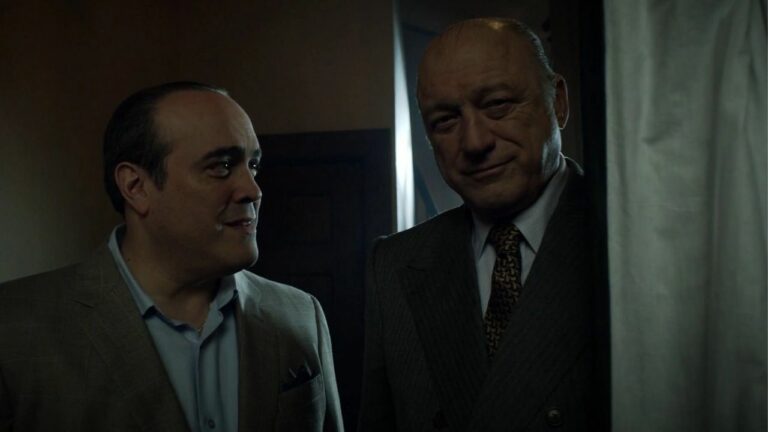
They give the people from the lowest of the lowest socio-economic status what they starve for—food, shelter, and money. These then become their goons. In fact, with the money these powerful men have, they buy every level of the societal hierarchy.
The fact is, whatever level of the hierarchy people may be at, they all ultimately belong to the system. The system has its flaws and loopholes, which manifest themselves in various ways. One such way is that there’s always something that everyone needs.
It could be a promotion. It could be money for a loved one’s treatment, or it could just be sheer lust for power.
This human mindset of want and need is fed by powerful men who sit at the top of the societal hierarchy. Batman Begins portrays this beautifully within the first 20 minutes of the film.
II. The Leader from Outside the System
Here’s where Batman, the outsider, comes in. He’s not just a superhero but also someone who isn’t part of the system. Hence, his biggest superpower isn’t his ability to defeat fear or the martial arts he trained in for years, but his freedom from the shackles of the system.
Batman starts fixing the system by trying to find the roots of Maroni and cut those roots down. He doesn’t kill people because the outsider believes that he can fix the broken system if the corrupt people are behind bars.

So Batman, as an outsider, plays the role of the leader, the inspirer who doesn’t have any background in the system but got into it just to fix it.
III. The Face of Fascism
Here’s where he’s met with an opposing ideology. Ra’s Al Ghul embodied this ideology in Batman Begins.
Ra’s Al Ghul symbolizes fascism and believes in killing people who “do not deserve to live.” In this case, it’s the city of Gotham. This “do not deserve to live” category can include anyone deemed so by the person behind it.
Ra’s Al Ghul’s methods symbolize that of Hitler’s. If you look closely at Hitler’s reign, he began degrading the Jews. His smear campaigns included talking about how the society needed to be “cleansed” of Jews. Furthermore, Hitler had a way of doing this. He created a personality for himself and all his soldiers, including a uniform for anyone who wished to join him.
If you notice, Ra’s Al Ghul’s League of Shadows stood for cleansing nations, cities, and places of people who they didn’t think deserved to live. In fact, whoever they deemed unfit for life was annihilated.
Of course, as we all know, when the two ideologies faced off against each other, the so-called leader who believed in the system won.
The Vigilante and Terrorism | The Dark Knight

The second film picks up right after the events of the first one. We see justice being served to the likes of Maroni and Falcone, and those at the top of the hierarchy now in hiding, wondering how to get rid of this new leader.
However, the job is still half-done because those in hiding needed to be behind bars as well.
Batman had accomplished or at least learned to complete one part i.e. taking down the criminals who exploit people who needed things. However, he couldn’t control people’s needs, greed, and selfishness, which was also part of the corruption.
I. Humans’ Selfish Nature and their Survival Instinct
The innate need to choose yourself first is an animal instinct that no one can ignore and is thus prevalent in humans as well. It’s in a way connected to Darwin’s theory of survival of the fittest, and that’s how the term survival instinct came into existence.
The person who capitalized on this was the crown prince of crime—Joker! He created chaos because he understood human nature better than anyone else.
II. The Face of Terrorism
Joker in our society represents terrorism. Terrorism in any form or shape always has a cause at its core. Everything else revolves around it. The reason is bigger than the one who propagates it, and the cause must be upheld even at the cost of the propagator’s life.
Joker symbolized all this and more. His cause was to show Batman how the society, the system, the morals people had were all just a “bad joke.” He truly wanted Batman to realize that his belief in the system was misguided, and it was merely a house of cards ready to fall at the tiniest gust of wind.
Joker did the following with terrific beauty:
- He proved Batman was selfish too, because he chose to save Rachel over Harvey Dent, who’d have been more valuable to the justice system than Rachel.
- Joker corrupted Harvey by instilling in him his ideology—everyone and everything is corrupted, and the Joker’s merely the exposer.

The third thing that he tried to but couldn’t do was showcase that people, in general, are selfish. This theory of his was disproved when both the prisoner ship and the civilian ship decided not to blow each other up, despite knowing that doing so meant letting their own ship explode.
But with Harvey being corrupted and murdering so many people, all the criminals he put behind bars would come out. So the Leader (Batman) had to take the fall by taking responsibility for all the murders Harvey Dent committed and turn into a mere vigilante.
The Savior and Anarchy | The Dark Knight Rises
The third film continues eight years after the second installment. Everything is peaceful. All the criminals are behind bars. But all of this was based on a lie that Harvey was a hero.
This lie was necessary, for otherwise, people’s faith in the system would fade, and there’d be complete chaos. All the work done by Harvey, Gordon, and Batman would be undone.

Then comes our third and final villain—Bane, who represents anarchy. Although Bane set out to fulfill Ra’s Al Ghul’s destiny of destroying Gotham City, his methods were much worse and in fact, so was his ideology. Remember what Alfred said—Bane was so extreme that even the League of Shadows excommunicated him.
While Ra’s Al Ghul had a method to everything he did, Bane only wanted to unleash chaos in the city. He was successful in doing so by revealing Gordon’s lies, setting off a nuclear bomb, and releasing criminals from prison and the Arkham Asylum. He could’ve very well just used the bomb to annihilate the city, but he wanted complete chaos.
With Bane’s first move, the “vigilante” came out of hiding, and while the police chased the man who murdered “Harvey Dent,” he tried to prevent the chaos.
But Batman was growing older, and Bane was much faster. So playing savior wasn’t going to help. Bane broke him and made him realize that he was a mere mortal. Something Alfred had already warned Bruce about.
So, here was Bane wanting to witness the chaos and even make Batman watch it.
But the Dark Knight did rise, and it was because of the simple epiphany that sometimes you need to stop looking for the safety net (rope).

Although he was out and ready to fight Bane again, he couldn’t do it alone. But by this time, people had realized who Bane was and how the city would go down if they wouldn’t do anything.
Thus the true savior here was not Batman but the people’s conscience. Their instinct to uphold justice. To uphold harmony and restore the system, for they would be destroyed without it.
Bane brought down the city to its worst possible state by creating utter chaos. This triggered the conscience of people in a way Batman never could. Thus, people grew above their own selfishness and were finally ready to fight for something bigger than themselves.

This was lacking in the first two installments and was vital to achieving the harmony we saw at the end of the trilogy.
Batman’s journey ended in the way he intended. He began in the first part to fix the system and let it work on its own, and that’s what happened. The only difference was that in the first movie, he thought he could do it alone, and by the last one, he realized he couldn’t. He got all the help he needed from Catwoman, Gordon, Robin, and every citizen of Gotham.
But he handed down his mantle to Robin for a reason. The passing of legacy shows the constant balance shift between peace and chaos. Although there was peace, for now, there’d always be men who want to take over the system for their own reasons. So while there’s peace, nobody needs Batman, but when there shall be chaos, people would have a new savior.
Conclusion
In the end, The Dark Knight trilogy showcases the facets of society that we’ve normalized to the point that it doesn’t bother us. We aren’t surprised when terrorist attacks happen. We remain unfazed when nations crumble into chaos. I can go on with multiple examples, and the trilogy would’ve subtly referenced it all.
It truly is a masterpiece that we all must experience at least once, and then again to understand its finer nuances. Even if we are unaware of all these societal and psychological phenomena, we still will get a glimpse of what it all means in a way we understand.
After all, that’s one of the reasons why we watch cinema, right? To encounter something new that we’ve never seen before. That’s all I’ll leave you with. So go on now, waste no time, for this epic saga awaits you.
About The Dark Knight Trilogy
The Dark Knight Trilogy (also referred to by fans as the Nolanverse) consists of Batman Begins (2005), The Dark Knight (2008), and The Dark Knight Rises (2012), all directed by Christopher Nolan. Collectively grossing over $2.4 billion at the worldwide box office, the trilogy has been ranked among the greatest ever made.
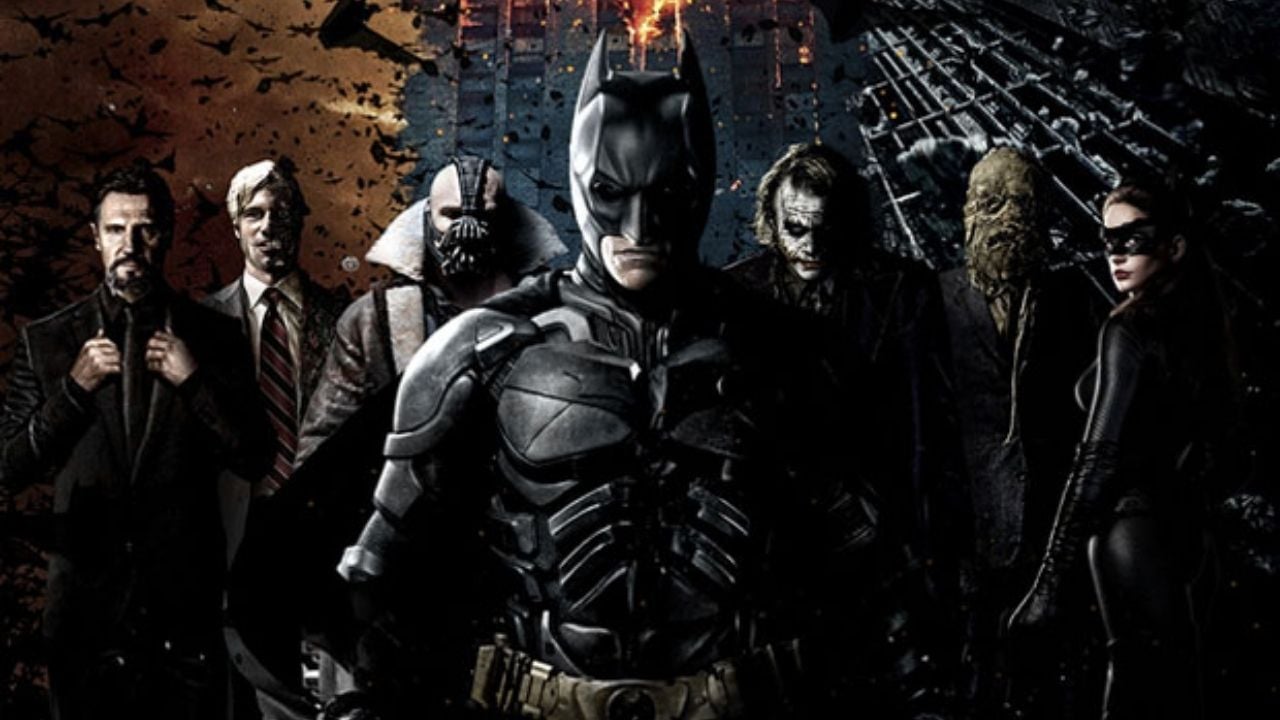
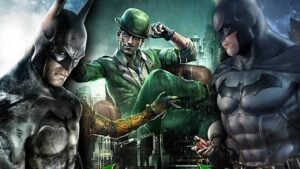
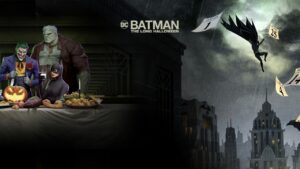
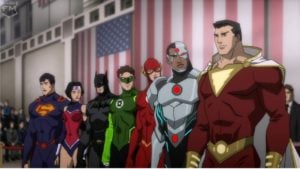
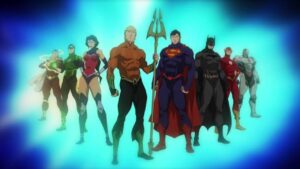
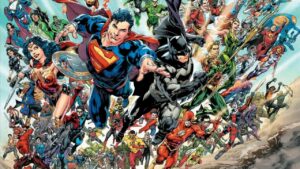


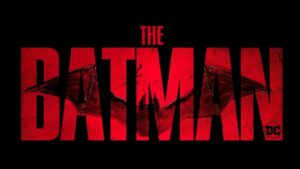
No Comments on The Social Commentary behind The Dark Knight Trilogy